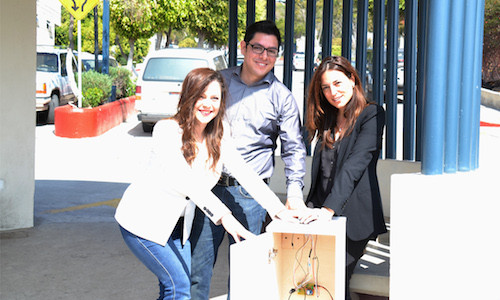The Big Benefits of Small Conversation
Mara Balestrini has recently returned from Ensenada, Mexico, where she has been deploying the first stage of her JokeBox project on enhancing social connectivity.
The JokeBox is an urban installation whose primary purpose is to promote social interactions in the public space, encouraging collaboration and conversation between people. It is a technological device that consists of two pedestals with buttons, which can detect the presence of individuals in a limited radio. When detecting their presence, the JokeBox asks people if they want to hear a joke. To do so, users need to press both buttons at the top of the pedestals simultaneously.
There is much evidence that social connectedness can increase the well-being of individuals and communities. However, little research in HCI has studied the key factors involved in designing robust and easy-to-use interfaces to encourage social interactions among strangers in the public space. The JokeBox Study is a research prototype that allows us to gain insights into this challenging domain.
The JokeBox is a prototype of ubiquitous technology created by researchers Mara Balestrini, Jon Bird and Paul Marshall (University College London, UK), Raymundo Cornejo and Monica Tentori (CICESE, Mexico), with the help of students from both institutions. The study has been supported by the Ubihealth project, aimed at fostering research on technologies that promote the well-being of individuals either to prevent disease or promote healthy behaviors.
The first prototype of the JokeBox was created in November 2013 in London, where a small semi-controlled usability test was held in order to improve the design. Later, in March 2014, an in-the-wild study was held in Ensenada (Mexico) to test the JokeBox in four different locations (a park, a food stall, a shopping plaza and a bus stop), over four weeks. The collected data is now being analysed, with further in-the-wild studies planned over the coming months.
The JokeBox study received significant media attention in Ensenada and was published in different local newspapers, TV channels and radio stations.



